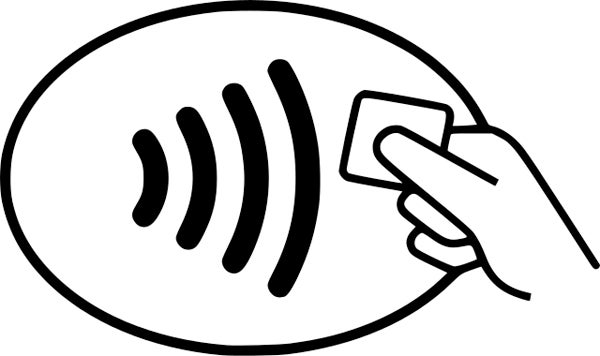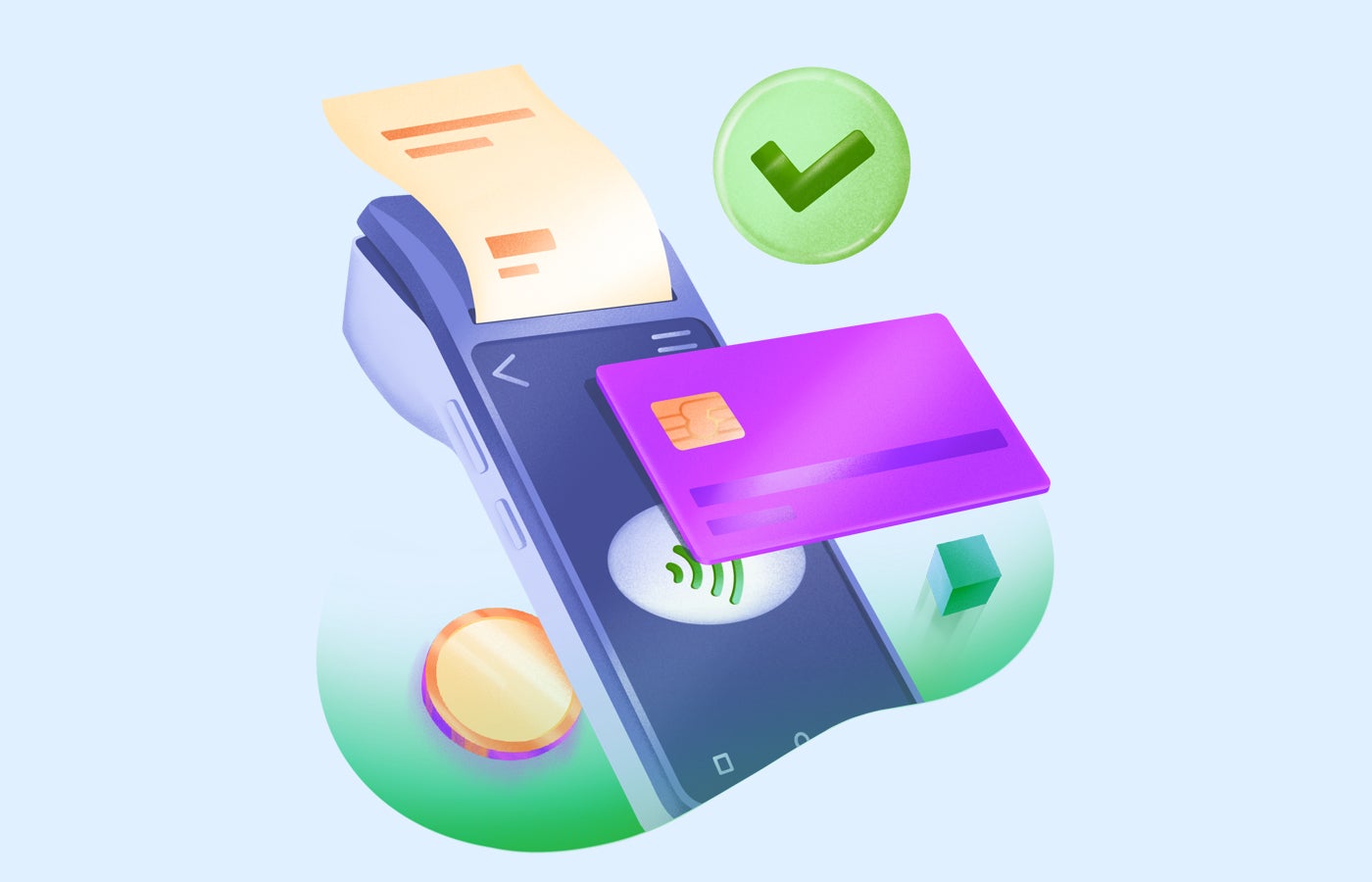Many customers would rather ditch inserting and swiping their credit cards. Luckily, you can meet the moment via Tap to Pay technology.
This innovation eliminates the need to insert or swipe a credit card. Instead, your customers simply hover their card or smart device near a payment terminal. No fumbling with zip codes and no signatures required. As a result, you can speed up transaction times while your customers enjoy a smoother check-out process.
Let’s discover how this win-win approach can help your small business.
What is Tap to Pay?
Tap to Pay, also known as contactless payment, lets customers complete transactions via a simple hovering of their credit card, smartphone, or wearable device near a payment terminal. An encoded chip within the card securely transmits payment information to the terminal. There’s no need to swipe, insert, or sign. The technology eliminates friction, making it easier to complete a sale. That’s why it’s a highly valued upgrade to any small business.
This payment method is incredibly popular and continues to grow. Visa reports more than 300 million Tap to Pay-enabled credit cards in the United States at the end of 2023, with upwards of 25% of transactions in major metro areas like New York City registering as contactless.
How does Tap to Pay work?
Tap to Pay relies on near-field communication (NFC) technology. This concept involves magnetic field induction to “sense” when a device or payment card is within a few inches.
You’re probably already familiar with NFC. It’s the same way your smartphone finds another device to start a Bluetooth connection. It’s also how public transit riders can tap a plastic card to pay for a bus fare, among other uses.
Here’s how the process works:
- Present the payment source: The customer holds their card, phone, or wearable device near the payment terminal.
- NFC communication: The terminal and the device establish a short-range wireless connection through NFC. Payment information is transmitted securely and rapidly.
- Transaction approval: Like traditional card swipes, the payment terminal communicates with the customer’s bank or payment processor to approve the transaction.
- Confirmation: Once approved, the payment is complete. There are no other steps.
The entire process typically takes just one or two seconds. Compare this to a traditional card swipe, which can take up to five times as long. Cumulatively, this speed translates to oodles of time saved, generating more revenue and happier customers.
Benefits of Tap to Pay
Tap to Pay delivers numerous perks to small businesses. These advantages range from easier transactions to enhanced security. Let’s explore some marquee benefits.
Faster transactions
As mentioned above, Tap to Pay speeds up the checkout process. A simple touch of card to terminal is often all that’s needed to complete a transaction. Customers enjoy this perk, and it allows you to serve more people in less time. As a result, adopting this technology could increase revenue in the long term.
Enhanced security
When it comes to security, this high-tech offering is superior to traditional card payments. That’s because each transaction involves top-tier encryption and a one-time code to validate the payment device. Plus, since there’s no need to physically insert a credit card, skimmers can’t capture any information. Some devices also mandate biometric authentication, like fingerprint or face recognition, adding an extra layer of security.
Contactless convenience
Many customers appreciate the hygienic appeal of Tap to Pay since there’s no need to touch the payment terminal. This approach is particularly attractive in the post-COVID-19 era.
Increased sales potential
Tap to Pay speeds up check-out and conveys your business’s drive to use technology to enhance the buying experience. Both elements help earn customers’ trust, which can boost sales over time. This technology also allows you to accept payments from customers who might only have their smartphone or smartwatch on them.
Depending on your Tap to Pay-enabled hardware, you could also accept payments in more out-of-store settings, such as events, pop-ups, and curbside, enabling more sales opportunities.
Accommodates diverse abilities
Seniors and people with disabilities benefit greatly from Tap to Pay. Since there’s generally no need to input zip codes or personal identification numbers (PINs), it’s a boon for those with memory issues. And, the ease of a simple tap makes it much easier for people with reduced dexterity.
How businesses can accept Tap to Pay
For businesses looking to accept Tap to Pay, the process is relatively straightforward. It involves ensuring that your point-of-sale (POS) system supports NFC technology. Otherwise, there isn’t any difference between accepting a card payment via Tap to Pay and a card payment via magstripe or chip.
Let’s walk through a general outline for getting started with this modern system.
Upgrade your payment terminal
First, ensure your payment system is NFC-enabled. Most modern terminals now have this technology built in. Look for the Tap to Pay symbol on your equipment.

If your current system doesn’t support Tap to Pay, you’ll need to purchase a new device from your payment processor.
Choose a payment processor
Speaking of payment processors, you’ll need one that offers contactless options. Many well-known companies like Square, PayPal, and Stripe include NFC technology by default. And thankfully, there’s usually no extra charge for these swipe-free transactions.
Related: Best Payment Processing Companies
Train your staff
Once you’ve locked down the technology, teach your staff how to accept Tap to Pay payments. Employees should know how to fix any issues and explain the process to customers unfamiliar with the technology. Indeed, many customers report encountering terminals that erroneously require a traditional swipe when they try tapping. You can dodge this problem with proper setup and diligent training.
Promote Tap to Pay
Advertise that you accept Tap to Pay with prominent signage at your business. Many payment processors provide complimentary door stickers, in-store signage, and digital assets to raise customer awareness. The more customers know you offer this option, the more likely they are to use it.
Frequently asked questions (FAQs)
What are the limits on Tap to Pay?
Transaction limits for Tap to Pay vary by country, bank, or card issuer. Many banks limit the dollar amount a transaction can total without requiring a PIN or signature. In the U.S., this maximum is typically around $200.
How much does Tap to Pay cost?
The cost of accepting Tap to Pay transactions depends on your payment processor. A compatible payment terminal costs $300 or less. Once you’re set-up, credit card processing fees average between 2% and 3%, with no additional costs for contactless payments. Remember that Tap to Pay can lead to faster transactions, which may mitigate these pesky fees.
Is Tap to Pay secure?
Yes, Tap to Pay is highly secure. Transactions are encrypted and use tokenization, which replaces sensitive card details with a one-time-use code unique to the user and transaction. This makes it difficult for fraudsters to intercept or misuse payment information. In addition, mobile devices often require biometric or passcode verification before a transaction can be completed, adding an extra layer of protection.
Can you use any credit card to Tap to Pay?
Not all cards are Tap to Pay enabled. Cards that support this feature typically have a small symbol that resembles a Wi-Fi signal. If customers don’t have a contactless card, they can still use a mobile wallet like Google Pay or Samsung Pay to perform a Tap to Pay purchase using their smartphone.
What’s the difference between Tap to Pay and mobile wallets?
Tap to Pay refers specifically to contactless payments made with NFC-enabled cards or devices. Mobile wallets like Apple Pay or Google Pay are apps that store payment information digitally. Both rely on the same NFC technology, but mobile wallets can store multiple payment methods and often provide additional features like loyalty cards, coupons, and more.
Read the full article here














